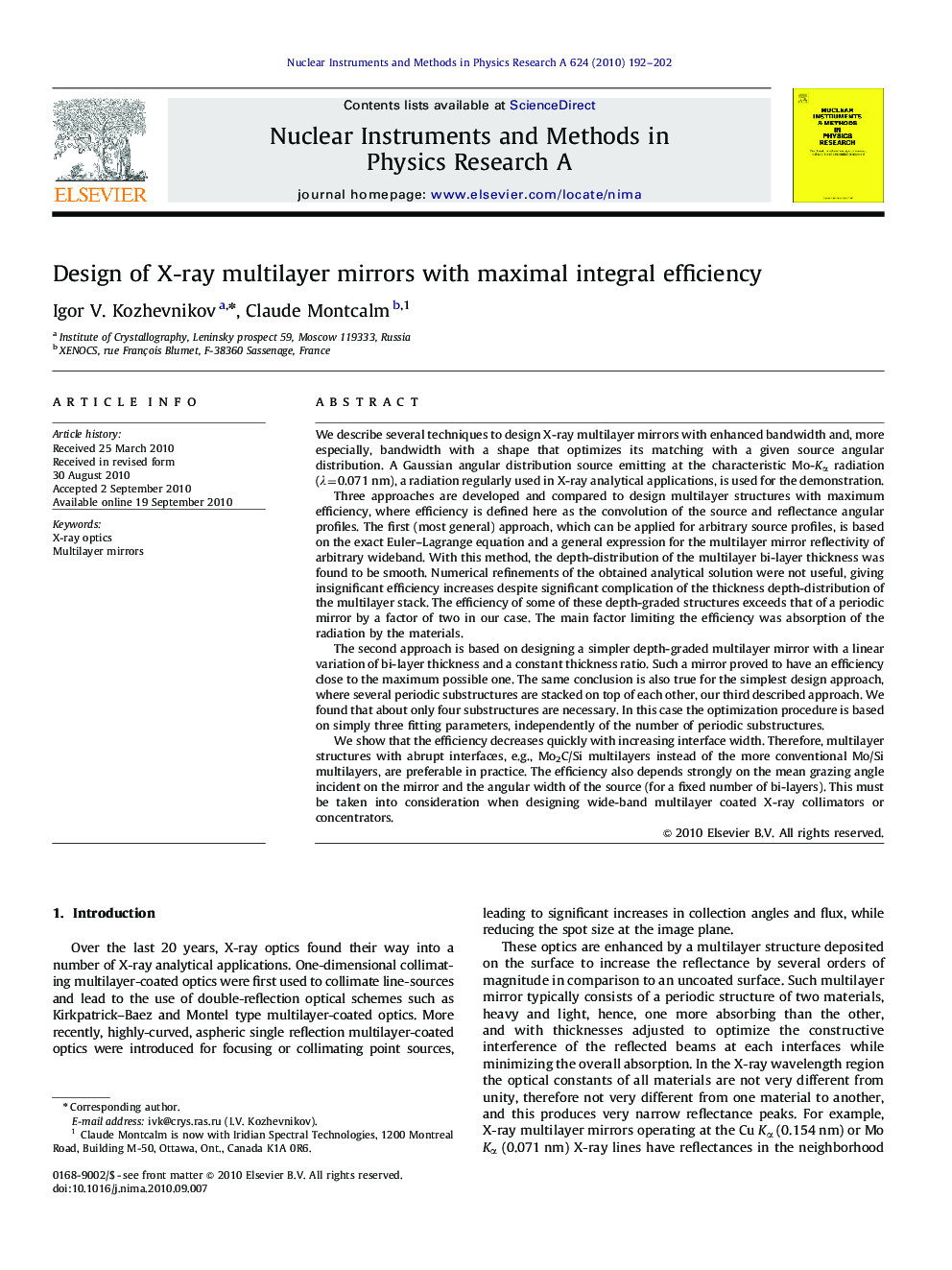| کد مقاله | کد نشریه | سال انتشار | مقاله انگلیسی | نسخه تمام متن |
|---|---|---|---|---|
| 1825992 | 1027373 | 2010 | 11 صفحه PDF | دانلود رایگان |

We describe several techniques to design X-ray multilayer mirrors with enhanced bandwidth and, more especially, bandwidth with a shape that optimizes its matching with a given source angular distribution. A Gaussian angular distribution source emitting at the characteristic Mo-Kα radiation (λ=0.071 nm), a radiation regularly used in X-ray analytical applications, is used for the demonstration.Three approaches are developed and compared to design multilayer structures with maximum efficiency, where efficiency is defined here as the convolution of the source and reflectance angular profiles. The first (most general) approach, which can be applied for arbitrary source profiles, is based on the exact Euler–Lagrange equation and a general expression for the multilayer mirror reflectivity of arbitrary wideband. With this method, the depth-distribution of the multilayer bi-layer thickness was found to be smooth. Numerical refinements of the obtained analytical solution were not useful, giving insignificant efficiency increases despite significant complication of the thickness depth-distribution of the multilayer stack. The efficiency of some of these depth-graded structures exceeds that of a periodic mirror by a factor of two in our case. The main factor limiting the efficiency was absorption of the radiation by the materials.The second approach is based on designing a simpler depth-graded multilayer mirror with a linear variation of bi-layer thickness and a constant thickness ratio. Such a mirror proved to have an efficiency close to the maximum possible one. The same conclusion is also true for the simplest design approach, where several periodic substructures are stacked on top of each other, our third described approach. We found that about only four substructures are necessary. In this case the optimization procedure is based on simply three fitting parameters, independently of the number of periodic substructures.We show that the efficiency decreases quickly with increasing interface width. Therefore, multilayer structures with abrupt interfaces, e.g., Mo2C/Si multilayers instead of the more conventional Mo/Si multilayers, are preferable in practice. The efficiency also depends strongly on the mean grazing angle incident on the mirror and the angular width of the source (for a fixed number of bi-layers). This must be taken into consideration when designing wide-band multilayer coated X-ray collimators or concentrators.
Journal: Nuclear Instruments and Methods in Physics Research Section A: Accelerators, Spectrometers, Detectors and Associated Equipment - Volume 624, Issue 1, 1 December 2010, Pages 192–202